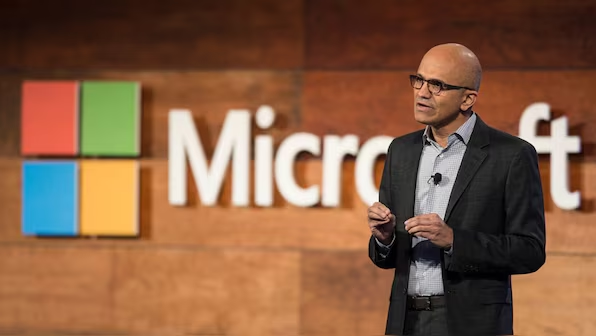
As part of its larger organisational restructure, Microsoft has announced another round of layoffs in 2025, a huge announcement that is rocking the global software sector. Hundreds of positions across a variety of divisions, including Azure, Mixed Reality, and even LinkedIn, have been terminated as a result of the decision, which coincides with growing economic constraints and strategy moves towards AI and cloud services. This is a thorough analysis of the issue, including its ramifications, employee responses, and potential consequences for big tech’s future.
📉 The Layoffs: Our Current Understanding
Although Microsoft has not formally revealed the precise number of impacted workers, the company has verified the layoffs through internal memos and public pronouncements. More than 1,000 positions have reportedly been eliminated worldwide, including teams in the engineering, sales, marketing, and mixed reality departments, according to corporate sources.
Among the most prominent departments impacted are:
AI & Azure Cloud Services
LinkedIn (solutions for talent and marketing)
The Mixed Reality Division of Microsoft
Teams for Gaming and Customer Experience
In line with Microsoft’s new priority areas, such as cloud infrastructure optimisation, Copilot advancements, and artificial intelligence integration, many of these improvements are being referred to as part of a “recalibration strategy.”
Oficial Declaration
An official from Microsoft said in an email to staff members:
“Workforce and organisational changes are an essential and frequent component of running our company. We are still dedicated to making investments in future key development areas.
This follows a larger trend of IT firms doubling down on automation, security, and artificial intelligence (AI) technologies while diverting resources from slower-growing or failing industries.
Situation: This is not the first time
In recent years, Microsoft has laid off large numbers of employees. Citing the global economic slump and changing IT objectives, the corporation let off 10,000 employees at the beginning of 2023. A hiring freeze and a stronger push towards AI, particularly through its collaboration with OpenAI and the introduction of Copilot-integrated tools across Microsoft 365.
📊 What Caused the Layoffs?
This action is being driven by several important factors:
Macroeconomic Pressures: Microsoft, like many computer businesses, is dealing with tighter financial markets, investor expectations for operational efficiency, and inflation-related issues despite record earnings.
AI Shift: As a result of the company’s significant investment in AI and increased dependence on automated technologies, fewer manual jobs are needed, particularly in support and sales.
Redundancy After Mergers: Activision Blizzard and Nuance are two recent acquisitions that have probably resulted in overlapping jobs.
Strategic Realignment: The business is phasing out old skill sets and focussing on subscription models, AI-backed services, and cloud solutions tailored to a particular sector. To do this, it needs fresh people.
😓 Industry and Employee Responses
The industry is feeling a mixture of acceptance, worry, and sadness as a result of the layoffs. Both current and former workers expressed their disappointment on LinkedIn and X (previously Twitter), frequently pointing out how unexpected the layoffs were. Some related tales of lengthy tenures and significant accomplishments that were abruptly terminated through brief meetings or emails.
Although Microsoft continues to dominate the market, industry observers have pointed out that these layoffs are a sign of a larger tech recession in which Amazon, Google, Meta, and Salesforce have all taken comparable steps.
🔮 What Will Happen to Microsoft Next?
Microsoft is still making significant investments in cutting-edge technology in spite of the layoffs:
Global expansion is underway for Copilot for Windows and Office.
With new integrations, AI-powered Bing is becoming more popular.
The business is constructing AI data centres in India and Europe.
Investments in cloud AI services and collaborations with OpenAI are expanding.
In order to raise money for cloud and AI expansion, the goal seems to be eliminating non-core positions. This may be an unpleasant short-term move, but it is necessary for long-term competitiveness.
Conclusion
Layoffs are never easy, but they frequently signal significant shifts in organisational systems. The truth of digital transformation—that conventional positions are becoming more and more susceptible as automation, artificial intelligence, and efficiency take centre stage—is shown by Microsoft’s most recent personnel decrease.
The lesson is apparent for both workers and job seekers: upskill and align with fields that are ready for the future, such as cloud computing, cybersecurity, and artificial intelligence. This could only be the beginning of Microsoft’s journey to become the decade’s leading AI-first technology company.







Add comment